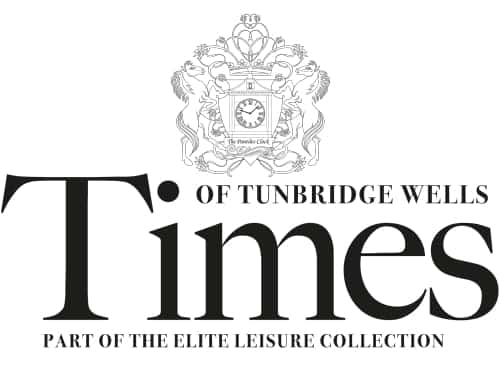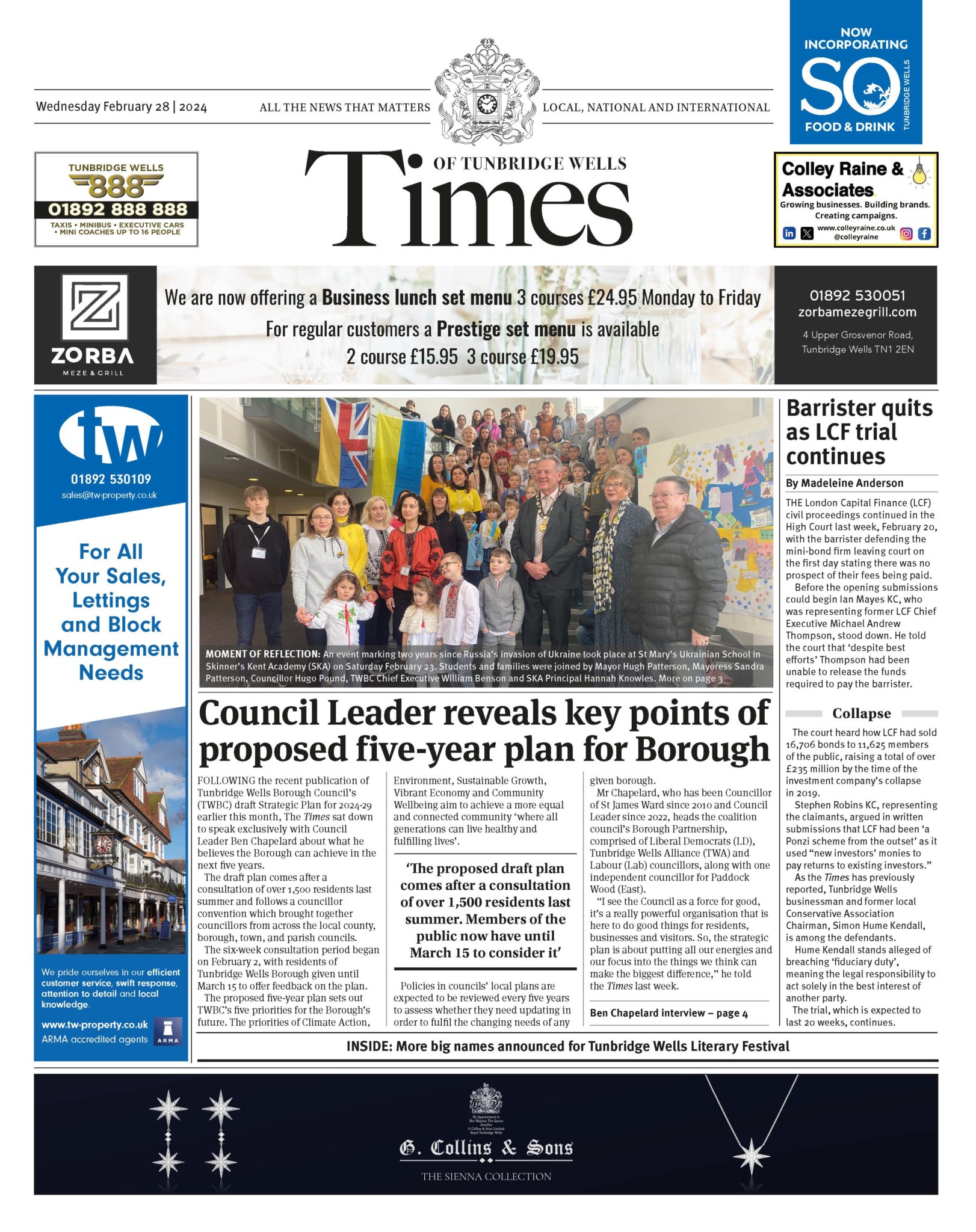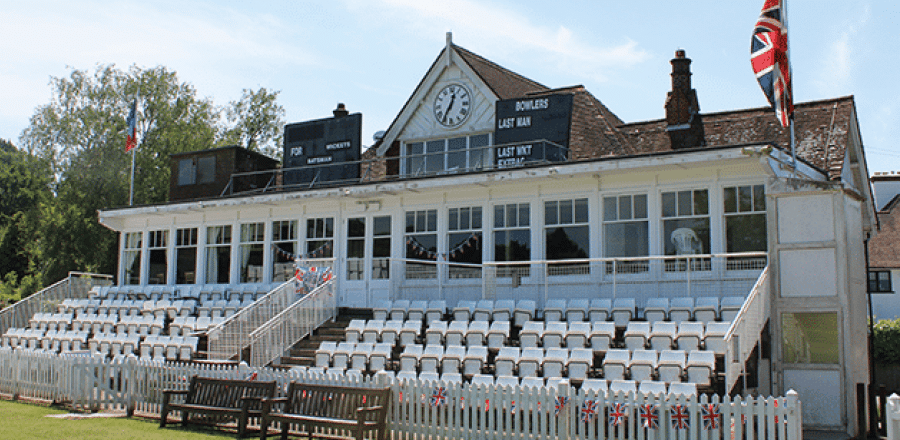I’m a Brummie by birth – the conventional, career-minded middle son of teachers. I had my eye on journalism but I got my first job in London working in the emerging industry of contract magazines and (subsequently) websites. I learned to be an editor and a marketer and loved everything about it, but every career move after that took me further away from the craft and seemed to require me to play politics and be more of a salesman. And I’m terrible at both those things!
I met Kate, now my wife; we went travelling and when we returned I went freelance. That was nearly 20 years ago, and somehow I now find myself middle-aged with three daughters, living in Tunbridge Wells. My final contracts were for the BBC, and commutes to White City were ageing me fast so I was looking for a way out! I also wanted a way to do more of the school runs – I have two kids at St John’s and one at The Skinners’ Kent Academy – and so I made the leap to being a full-time author a year ago.
Having spent many years editing other people’s prose I’m an inveterate critic with a strong masochistic streak. So as my eldest daughter reached the age of enjoying bedtime stories I couldn’t help thinking that perhaps I could do better than some of the books we were reading. We were enjoying Dorothy Edwards’ My Naughty Little Sister books, but tales of ruddy faced coppers and cakes in pantries made me wonder if they were due an update – so I wrote my first Cheeky Charlie stories.
Independent spirit
I didn’t even know what self-publishing was when I began. I naively sent my first book of stories off to agents and publishers, thinking it was a numbers game and it was only a matter of time before I’d be taken on. Twenty rejections on – most of which were simply unanswered letters – I had a rethink, and took an online course in the principles of self-publishing.
That was a ‘eureka!’ moment as I realised that this career uses many of the publishing and marketing skills I had already acquired. It was also the first of many false dawns as the challenges became apparent – with several thousand titles uploaded to Amazon every day the odds are stacked against you, but in different ways to traditional publishing.
I’m a massive advocate for self-publishing. The barriers to entry are relatively low, and that includes the initial financial outlay. It’s relatively meritocratic; there’s nobody to tell you what you can and can’t publish, and you manage the entire process which is great for control freaks like me. If you want to switch genres, or re-cover your books, or target Canadian buyers, or advertise your backlist, then you can.
You do all your own marketing, but then nearly all authors do these days. And if you disregard the huge advances given to a vanishingly small number of traditionally published authors, the numbers stack up very firmly on the side of those who are self-published. Any other route, and I’d still be on that train to White City.
There are plenty of challenges, too. The lack of gatekeepers means that there’s nobody to tell you that your book isn’t good, except perhaps the tumbleweed that rolls across your sales dashboard. Great books sink without trace; awful ones soar without reason. Getting books into bookshops at scale is nigh-on impossible.
It’s not all about words
And then there’s all that stuff that’s not writing… When I say I’m a full-time author, most people imagine I spend most of my time writing: but in reality, and particularly as a children’s author where the books are highly visual, it’s perhaps 30 per cent words on a screen, 40 per cent in production (working with illustrators and designers, managing the finances), and 30 per cent the authors’ bête noire: marketing.
Finally there is a psychological challenge too: you’re working alone, in parallel with the authors and illustrators who produce the fabulous books you see and buy at your local bookshop, but you’re not part of that world. It’s a fascinating industry to be in, but I’m still very glad to be on this side of the fence.
One unexpected bonus of being self-published is that I get emails from children all over the world; replying to them, and hearing about the thrill this gives them via their parents, is absolutely one of my favourite parts of the week.
In terms of what’s coming up for 2020, I’m working on a non-fiction series that I hope to publish in the spring/summer; it’s at the ‘I’m not sure if this will work’ stage right now, but that’s normal. I’d also like to do more picture books, although I need to see how my existing ones have been selling over the crucial Christmas period. Watch this space . . .
The joke’s on you
As well as being a children’s author, Mat also writes kids’ joke books.Here he explains why:
It’s a cliché but it’s true: I get my best ideas in the shower. I’d been looking at books for children aged five to 10, thinking how I could move on from my Charlie stories. I wanted to write a series and at the time my kids were telling the most atrocious jokes (they still do). I have a terrible memory for jokes – I couldn’t tell you a joke even now, even if you paid me – and all the joke books we had on the shelf were about Walkmans or teachers with canes. Mid-shampoo, I thought there could be a gap in the market – and they’ve proven to be some of my best-sellers, especially in the UK.
For the first set of books I leaned heavily on the usual tropes. The oldest joke is thought to date from 1900BC: “What hangs at a man’s thigh and wants to poke the hole that it’s often poked before? A key.” That one didn’t go in the books funnily enough, but commonplace misunderstandings and well-worn puns are often the ones that kids love the most. For the sequels, that masochistic streak kicked in; I was determined to be as original as possible, despite the fact that this is clearly a fool’s errand! I sat down with dictionaries of idioms, rhymes, encyclopaedias and more, and brute-forced the entire collection. It nearly killed me – I don’t plan to write another joke for a long, long time.
HOW TO MAKE A FORTNITE LOVING OR INSTA/NETFLIX OBSESSED CHILD ENJOY READING:
Empathy, stamina and cognition are all skills that need to be learned, and books arguably teach these very well as a byproduct of entertainment. But my kids love technology, and so do I. Given the choice between a scrolling or flickering screen and a printed page, it takes an act of willpower to settle down with a book. But that’s an investment of effort that can be repaid tenfold – if the book is good enough.
As adults, many of us know this already; but kids need to be shown that this is true, in a way that really wasn’t necessary for people who grew up before the internet. Reading doesn’t have to mean something weighty, of course: cereal boxes, pizza leaflets and even joke books are a start! Finding the first or next step for children as their reading muscles grow is definitely challenging. JK Rowling said: “If you don’t like to read, you haven’t found the right book.” As adults, our job is to help them on that journey of discovery.
This starts as we read to them, of course: they need to share the feeling of enjoyment that books can bring until they’re ready to go solo. It continues through trial and error and frequent trips to friends’ bookshelves, bookshops, and the library. That’s not always handy when it’s raining so a few years ago I put a Little Library outside my house where people on our street can leave and take books – so local kids can give that a try too!
Another big help in this mission is the school librarian if you’re lucky enough to have one, as my kids have been at St John’s. I enjoy doing that as talking to kids is undeniably fun because they’re such an honest, funny audience. I feel very strongly that a school that finds ways to support its library and keep its profile high, when there are so many priorities and screens competing for kids’ attention, is a school that values imagination, story-telling and creativity.
Why I love Tunbridge Wells: Mat Waugh
Where’s your favourite place to shop?
The Bicycle Bakery on Camden Road. Their bread reigns supreme.
And to eat out?
Hattusa on Camden Road or The Shuffle House on St John’s Road – both excellent in their own ways.
And for coffee or cocktails?
Black Dog for coffee and The George for a pint.
Finally, where’s the best place to go locally in order to get away from it all?
My favourite spot in the south east is the De La Warr pavilion in Bexhill. I adore the design and can’t think of a building I love more, or a place I’d rather spend an afternoon, whatever the weather.








